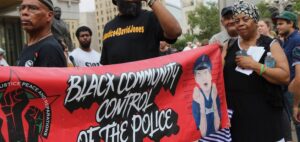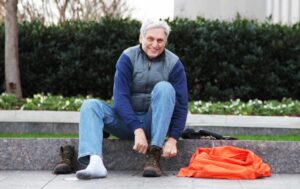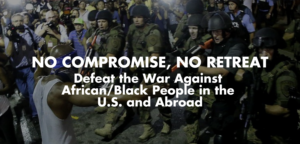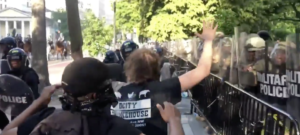 DAVE LINDORFF, dlindorff at gmail.com
DAVE LINDORFF, dlindorff at gmail.com
Editor of ThisCantBeHappening.net and 2019 winner of an “Izzy” Award for Outstanding Independent Media, Lindorff just wrote the piece “Tear Gas and Clubs in Lafayette Square Were Just the Beginning” for The Nation.
Lindorff reports: “On June 1, President Trump ordered National Park Police and troops from the District of Columbia National Guard and some other federal law enforcement agencies to drive peaceful protesters from Lafayette Square, north of the White House, to clear the way for his Bible-holding photo op. The same day, Trump and his Attorney General William Barr, along with Defense Secretary Mark Esper, also placed a call to the nation’s 50 governors.
“A leaked transcript of that taped conversation, published in full by a number of major news organizations [audio], shows both Trump and Barr referring in glowing terms to the way the Obama administration, almost nine years earlier, had crushed the months-long Occupy Movement across the country in a matter of a few days.
“Trump told the governors, many of whose states were experiencing massive protests against police brutality in the wake of the brutal videotaped police murder of George Floyd in Minneapolis, ‘This is like Occupy Wall Street. It was a disaster until one day somebody said, “That’s enough.” And they just went in and wiped them out. And it’s the last time I heard the name Occupy Wall Street. …’
“Trump was followed at that point in the call by Attorney General Barr, who told the assembled governors that the Trump administration planned to use the same Fusion Centers and Joint Terrorism Task Forces (JTTFs) the Obama administration had relied on to spy on and then crush the Occupy Movement to shut down the current wave of urban uprisings and protests over police brutality.
“As Barr put it, ‘The structure we’re going to use is the Joint Terrorist Task Force, which I know most of you are familiar with. Tried and true system. It’s worked for domestic and homegrown terrorists, and we’re going to employ that model.’
“It’s important to remember what actually happened with the Occupy Movement, a remarkable protest against inequality, corporate power, and the corrupt Wall Street banks whose recklessness had caused the 2008 financial crisis. Occupy was a spontaneous grassroots protest that sprang up in September 2011 in Lower Manhattan with the occupation of a one-block space called Zuccotti Park located just two blocks north of the intersection of Wall Street and Broadway. That encampment was quickly replicated in over 18 cities across the nation as part of a movement that introduced into popular discourse the class-conscious notion of ‘the 1 percent and the 99 percent.’
“As Mara Verheyden-Hilliard, executive director of the Washington, D.C.–based Partnership for Civil Justice Fund (PCJF) recalls, the Occupy movement” was targeted by the government. She said, “That’s why you saw encampments wiped out by police with over 7,000 arrests.”
“PCJF, following that shutdown of Occupy, turned to the Freedom of Information Act, seeking all documents relating to efforts to crush that movement from both the FBI and the Obama administration’s Department of Homeland Security, as well as the Pentagon and other intel agencies. After appeals, the organization received thousands of pages [see BigBrotherAmerica.org] of heavily redacted documents that made it clear that even as the FBI was reporting that the Occupy movement was peaceful, it had been classified as a domestic terrorist threat by both the FBI and DHS, ‘before even the first encampments were set up in Zuccotti Park and elsewhere in mid-September,’ with the FBI already providing detailed warnings of Occupy Wall Street’s plans to Wall Street banks and US corporations as early as August, 2011.”





